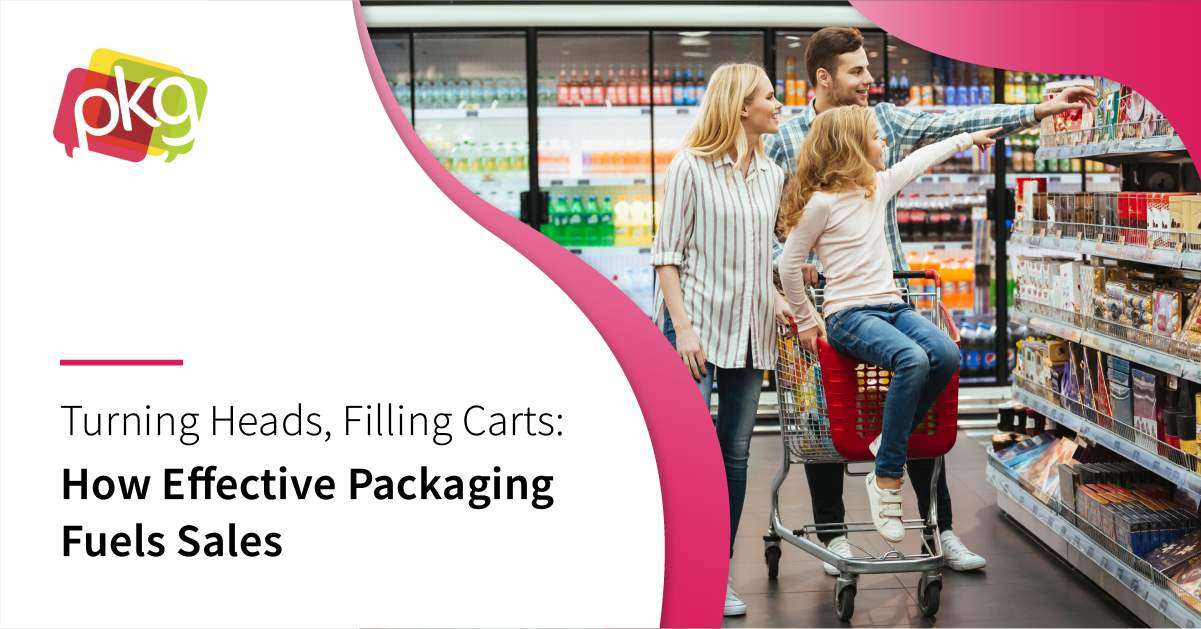 image credit: FutUndBeidl via flickr cc
image credit: FutUndBeidl via flickr cc
When it comes to food and consumer packaged goods (CPG) packaging design, less is definitely more.
For many emerging organizations and well-established companies considering rebranding, simple packaging can be a means of catching eyes in a retail environment.
Not only is minimalism appealing to many contemporary consumers, it’s appeal likely has roots in behavioral psychology. Research by Pricewaterhouse Cooper and other firms indicates that for millennial consumers, the minimalist aesthetic may represent a brief moment of respite from a world of choice. For shoppers who have grown accustomed to excessive choices in a retail environment, simple packaging design can offer a visual relief from busy packaging.
Regardless of whether the recent movement towards minimalist packaging design represents a trend or a revival of best practices, virtually any organization can glean lessons from companies who offer simplistic packaging. In this blog, you’ll learn ten best practices of minimalist design which can be applied to rebranding or product launch efforts.
-
Use Restraint
Design blogger Leslie Belknap advises designers to “think of Twitter” when attempting to create minimal designs. Just because something can be said doesn’t mean it should be stated. In a similar vein, carefully considering what does and does not belong on a package is a worthwhile exercise Several powerful principles to consider if you believe “less is more” include:
- Keeping text short
- Restraining color choices to four at most
- Using three or fewer typefaces
-
Select One Standout Element
Your packaging design shouldn’t have a logo that competes with bold coloring and a high-resolution image of your product. Combining multiple bold elements in a single package will only confuse and distract consumers who are observing your product for the first time.
Regardless of whether you opt for a logo, tagline, or color scheme that acts as the biggest distraction, you can only achieve minimalism if you keep it immensely simple. By playing with various standout elements, designers can discover the element that best describes their product.
-
Use Whitespace
Whitespace, also known as “blank” or “negative” space, is the act of creating space around primary packaging elements to draw the viewer’s eye towards the most important pieces. By using a busy, heavily visual element, you will eliminate the concept of white space. If you place your logo or tagline off-center and surround this element with clean packaging, you’ll direct the viewer's’ eye towards what matters most.
-
Consider the Rule of Thirds
The rule of thirds is a relatively complex graphic design principle, which is also employed in certain schools of photography. According to the Graphic Design experts at Canva, it describes the act of placing a central visual element and sizing it so that it takes up a third of the total visual grid.
KitKat is an example of a brand whose logo (the primary visual element in their packaging) takes up far more than a third of their packaging. Kraft, Tropicana, and General Mills are three more examples of iconic brands who also don’t follow the rule of thirds. For individuals contemplating their packaging design options, the rule of thirds is certainly something to be considered, but nothing close to a guiding law.
-
Be Clever
Can an image of your product replace a letter in your product’s name? Can transparent packaging tell more story than a logo or tagline ever could?
To achieve great minimalist design, packaging experts occasionally have to think outside the box. Consider whether secondary visuals can complete your viewer’s image, or whether simple visual tweaks can achieve the final result with the most efficiency.
-
Achieve Balance
In minimalist packaging design, balance isn’t necessarily the idea of a design that fits perfectly onto a separated visual grid. It’s a sense of balance and completion in the final effect of your package.
Achieving symmetry between the shape of your packaging and print can be a means of achieving symmetry. Balancing your product’s image and logo can also accomplish the same means. Regardless of your final design, the result should be pleasing and avoid a lopsided final effect.
-
Break Rules
Exceptionally great minimalist design is almost always exceptionally ground-breaking. Perhaps you’ll choose to not name your product on your packaging. Maybe you’ll choose an unprecedented shape for your packaging. Examples of rule-breaking could include:
- Avoiding a logo or product name
- Listing ingredients on the front of the package
- Making superlative product statements in lieu of a tagline
A packaging concept that hasn’t been “done” before doesn’t necessarily disqualify it from usage. By being willing to break rules, your brand can achieve a fresh and distracting image in crowded retail aisles.
-
Let Your Typography Speak
Most marketers are familiar with the concept that pictures speak louder than words. In the minimalist packaging design space, words are often more heavily-utilized than images. Many simple packaging concepts feature simple sentences or phrases that play a central role in packaging.
As a result of this aesthetic, typography choice cannot be overlooked. The use or omission of seraphs, blo0ck lettering, or bold fonts is a crucial choice in communicating your goals and values to consumers. The right typography choice, when coupled with a minimalist brand packaging design, can speak volumes.
-
Utilize Texture
In many recent revivals of minimalism in design, the concept of textures, especially unnatural textures is eschewed. However, the usage of texture is certainly something to be considered for minimalist CPG packaging.
Application of a “natural” appearing texture, such as a wood grain or grass, can communicate volumes about a health-conscious product. The total absence of texture could speak ever louder. By considering the use of texture, instead of imagery, in packaging design, consumers can deliver messaging without being obnoxiously overt.
-
Be Direct
Is your product “the most natural”? Or the only in your space that is truly “additive free”? For some CPG brands, boldly highlighting the unique value proposition (UVP) can create an effective central focus for visual packaging.
Bold statements aren’t always the right solution. However, if marketers can shape statements in a way that conveys honesty and transparency to consumers, it’s certainly a worthwhile exercise.
---
It’s unclear whether minimalism will remain a design trend that lasts in the CPG industry over the years to come. However, it’s highly likely that consumers will continue to value brand transparency and honesty in purchase decisions. By leveraging minimalist design principles, brands can achieve visual packaging design that communicates their values and positioning to consumers in mere seconds.







